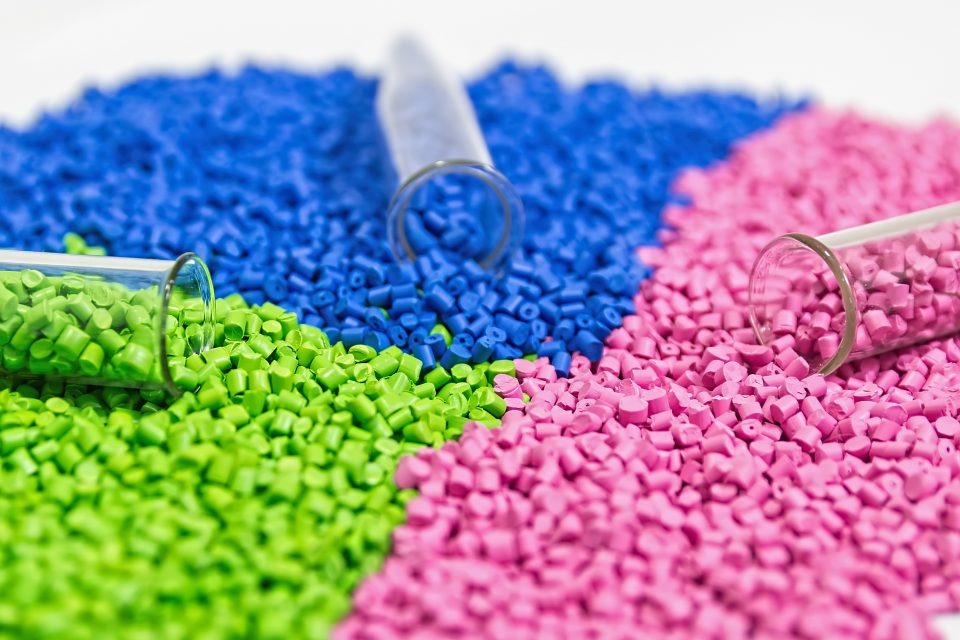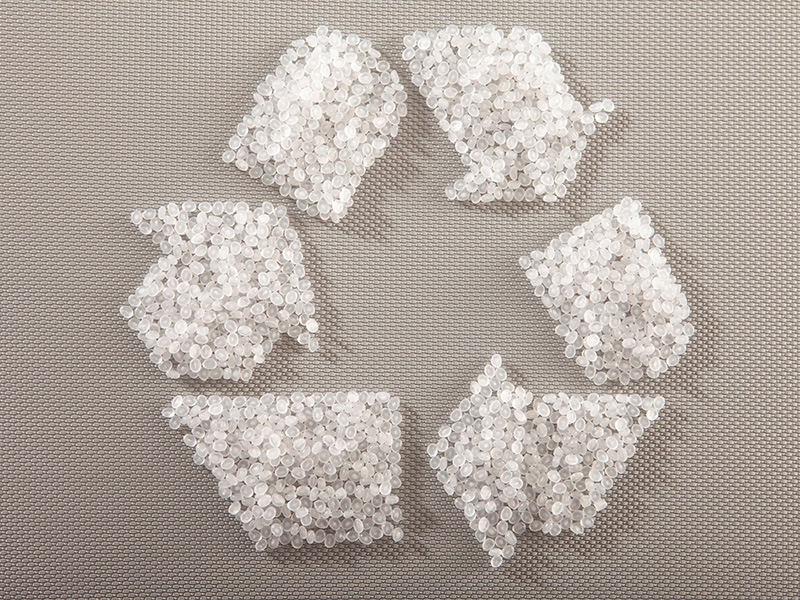Polyethylene Terephthalate (PET) Resins
Plastic resins (commonly referred to simply as plastics) are an indispensable part of modern life. For most, it is nearly impossible to imagine living in a world without them. There are dozens of different kinds of plastic resins, and although they are all manufactured in a similar manner, they all have different properties. This is because they are made of different types of hydrocarbons.
What are Hydrocarbons?
Hydrocarbons are molecules made entirely of hydrogen and carbon, and they occur naturally within crude oil underneath the Earth’s surface. When hydrocarbons are treated with heat, they break apart into smaller pieces in a process known as “cracking.” The hydrocarbon pieces then arrange themselves into long chains called polymers.
What are polymer pellets used for?

Pellets of these polymers, referred to as resin pellets, are then taken to shaping machines to be molded into many different shapes. Polymers can be dense or light; slippery or low-friction; strong or easily cracked. It all depends on what type of hydrocarbons they are composed of.
If the hydrocarbons used are ethylene glycol and terephthalic acid, the type of polymer produced will be polyethylene terephthalate, or PET for short.
PET is one of the most widespread types of plastic. In fact, it is the single most common type of plastic by volume.
First invented in the midst of World War II and steadily improved in the following decades, PET is strong, lightweight, and transparent. It is also break-resistant and waterproof.
Perhaps most crucially, it is the ideal plastic to use for packaging foods and beverages. There are two key characteristics to PET’s ability to keep foods and beverages fresh and safe for consumption. Unlike some other plastic resins, PET does not release harmful chemicals. It is also impenetrable by bacteria. This is why PET is commonly used to make peanut butter jars, microwaveable food packs, and water-and soda-bottles, among other products.
Can PET plastics be recycled?
Another advantage that polyethylene terephthalate has over other plastic resins is its sustainability. PET is the most widely recycled plastic in the world, and a new PET container can be produced with 100% recycled PET. PET can also be recycled again and again.

Compare this to other plastics like polystyrene or polyamide plastic 6,6. These plastics are often mixed with impurities when they reach the recycling plant and can typically be recycled only once. After that, quality declines significantly.
Since plastics are made of hydrocarbons, and hydrocarbons occur within the Earth’s oil reserve, they are a limited and slowly-replenished resource. There is a limit to how much plastic resin that can be manufactured. This makes PET’s ability to be recycled multiple times very attractive from an environmental and financial point of view.
Overall, given PET resin’s versatile, food-safe, and environmentally-friendly properties, it is easy to see why they are so popularly used.
If you would like to learn more about M. Holland and the plastic resin solutions we provide, submit a form and an M. Holland representative will follow-up with you.
If you enjoyed this Plastic Resin article, please check out some related previous posts
Polystyrene and Proposition 65: Much Ado About… Something?!?
Tracy Coifman Shares His Perspective on Being a Member of the M. Holland Family
Keeping it in the Family: Long-term M. Holland Employee on the Value of Working with Family
Print Advertising in the Plastic Resin Distribution Industry
M. Holland Regulatory Expert Talks About Company’s Growth and his Willingess to Change with the Times
M. Holland Corporate Giving Committee Hosts Repacking Day
Common Regulatory Questions You Should Ask
Plastic Resin Distributor M. Holland Announces M. Holland Automotive Group
Do Regulatory Documents Have a Freshness Date?
M. Holland Credit Analyst Becomes a Member of Exclusive Credit Group